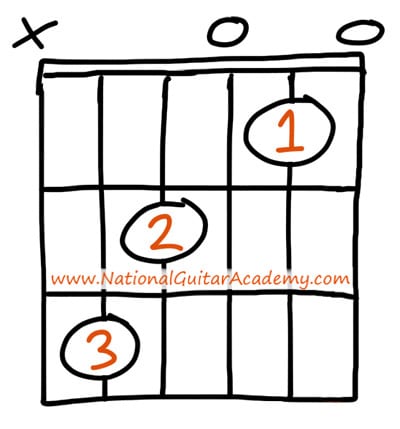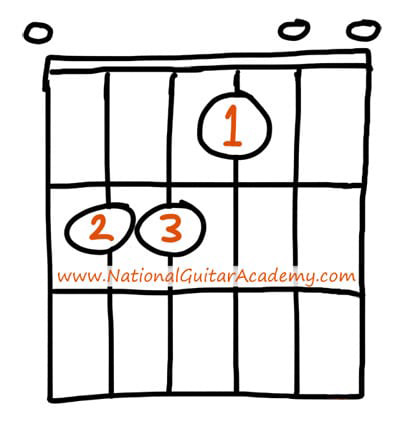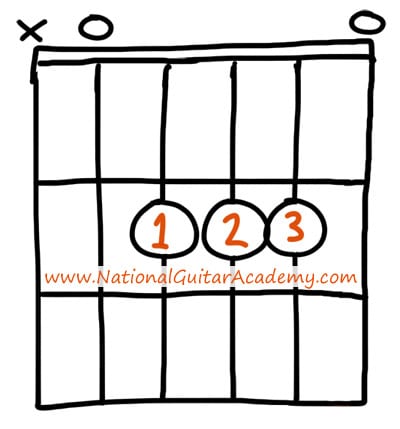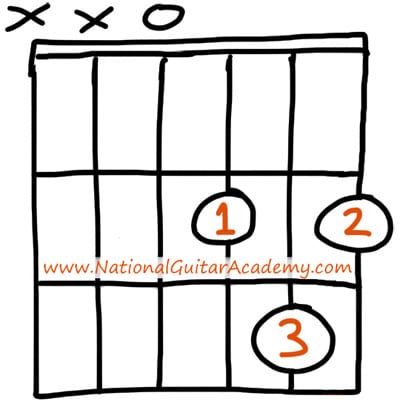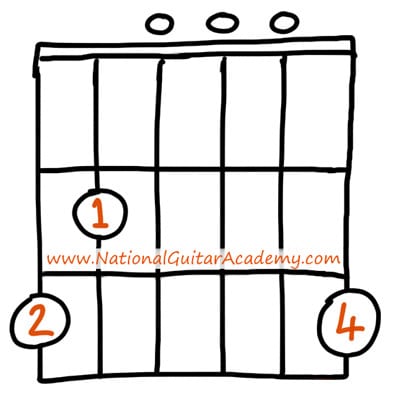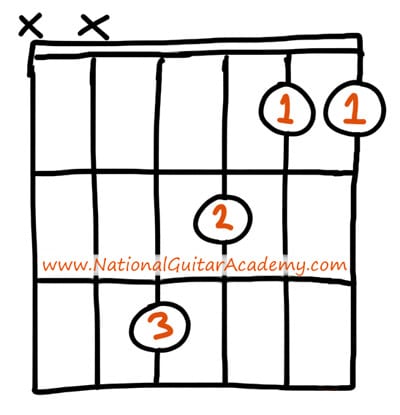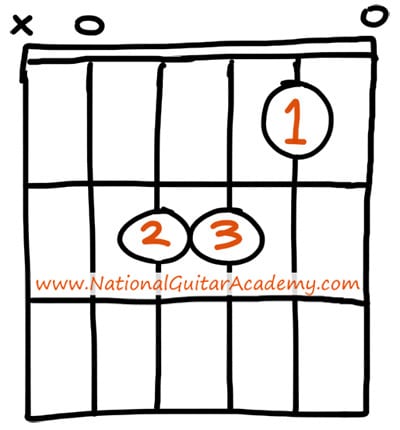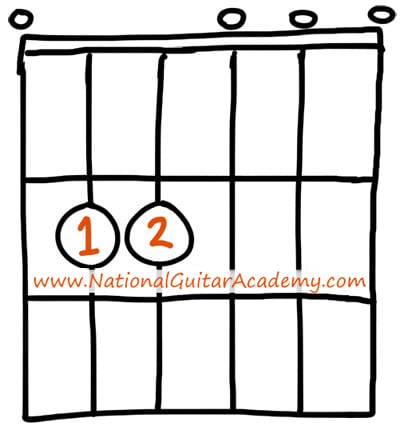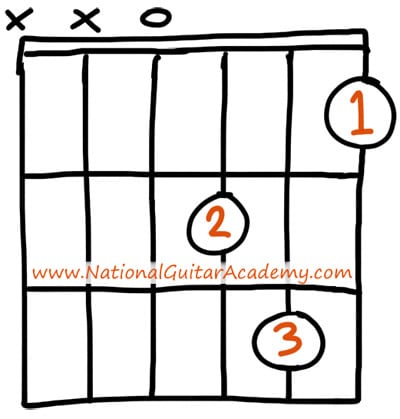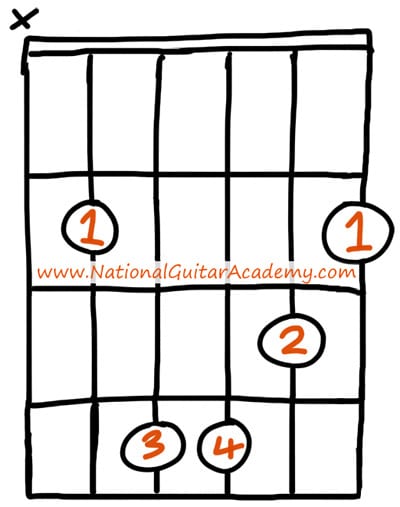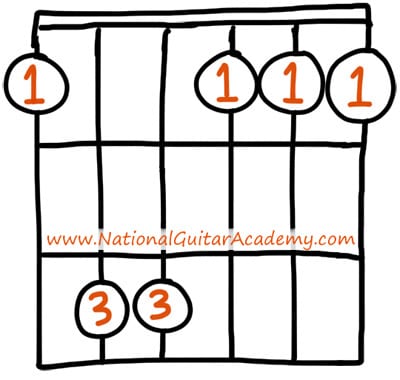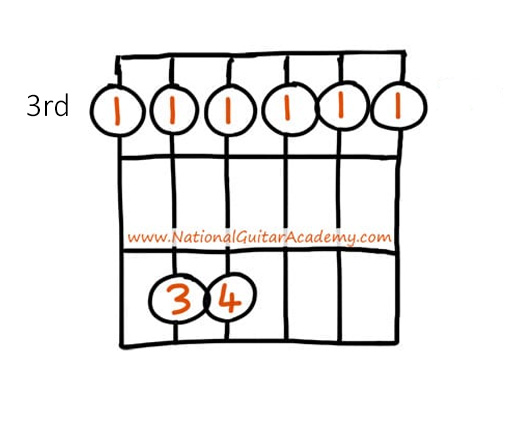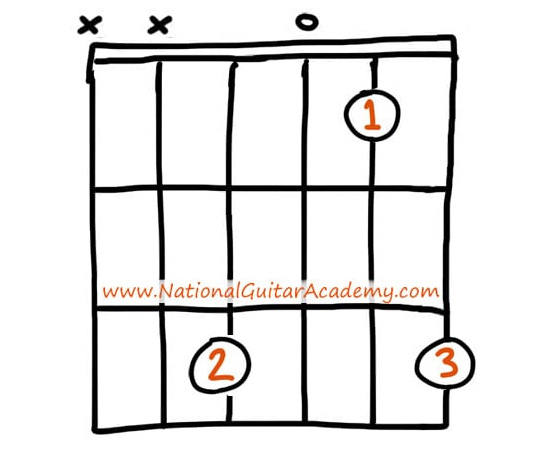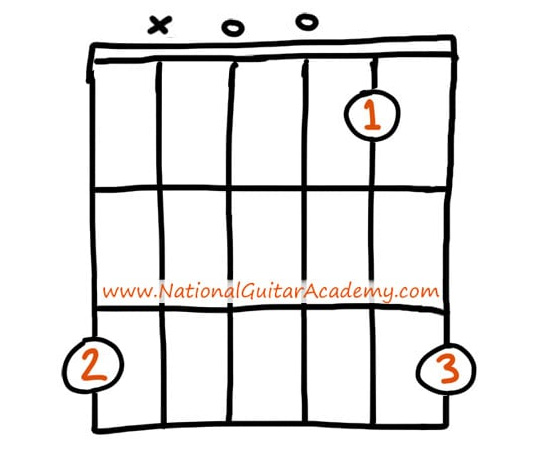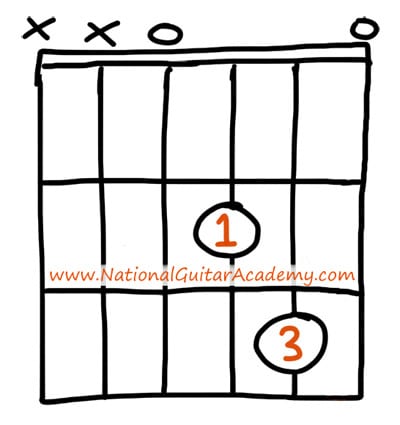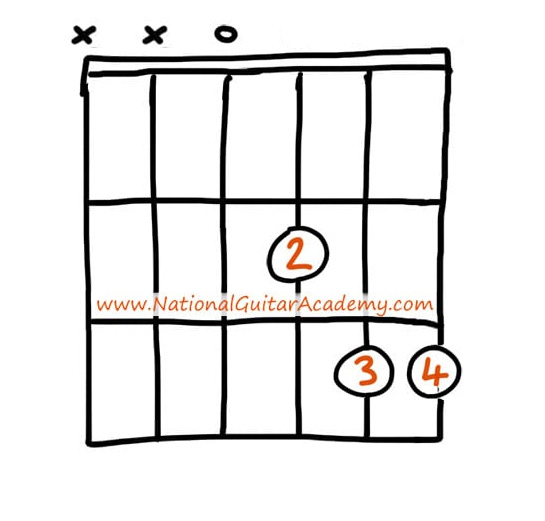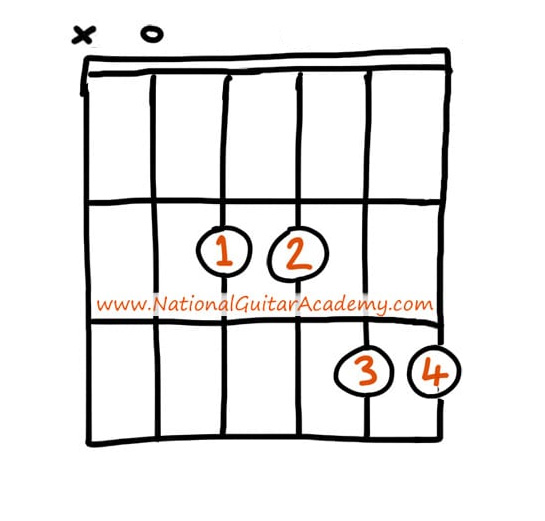Learning how to write a song can be difficult, but we’re about to break down all the basics for you right here! Let’s go!
Over 100,000 guitar-learners get our world-class guitar tips & tutorials sent straight to their inbox: Click here to join them
In this free lesson you will learn…
- 10 Essential chords for songwriting
- 8 Awesome chords to add to your vocabulary
- Tips for making your songs sound amazing
- How to analyze a piece of music
- What ‘voice leading’ is and how to use it!
Let’s Learn How To Write A Song!
So you want to learn how to write music!
You’re probably an avid listener of music, and wondering how the Pro’s put together such gripping pieces that leave you hanging until the very last note.
When we look at songwriting on the surface, it seems like this super-technical process that’s about as complicated as algebra.
The truth is that it’s actually quite simple!
Learning how to write a song can completely flip our understanding of music on its head for the better, and it’s something we recommend everybody take an interest in!
In this extra-long lesson, we’re going to teach you the essentials of songwriting so that you too can create your own original pieces of music!
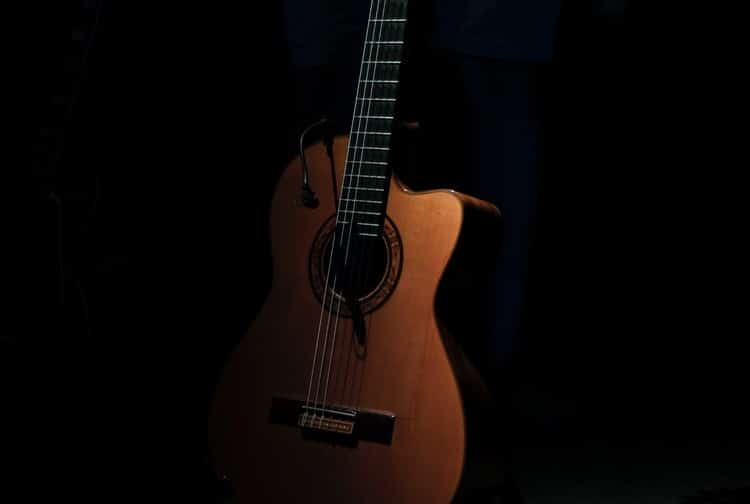
Whether you fancy yourself a lyric writer or just an instrumentalist with no interest in singing, learning how to write a song comes down to the instrumentation first.
Establishing a good foundation of chords can help you hash out a song quicker, and leaves room for you to write a great melody to be played on top, either by yourself or someone else.
We don’t just have to write songs for one or two people to perform, however.
- Use your imagination! If you picture your song being played by a five piece band, make notes on how that would sound and try to find musicians in your area to play your music with you!
- The beautiful part about the music community (both online and locally) is that it’s full of people who would love to play your music with you.
- With the beauty of the internet, we’re able to reach more musicians than ever before.

If you take an interest in songwriting and want to jam your tunes with others, join some Facebook groups online and reach out to people that you think might be interested.
- Finding people in your area is even better!
- Now let’s talk about why songwriting is important!
Why Is Learning How To Write A Song Important?
It’s very well and good to play other people’s music when we start out learning to play guitar.
However, many of us will find (after some time) that playing covers may not be enough.
- Many guitarists hunger for the creativity that comes with the instrument, and therefore it’s important for them to develop a good foundation to help them nurture their creativity.
- There are more musical genres out there than ever before, and each one has its own approach to songwriting and the creation of music.
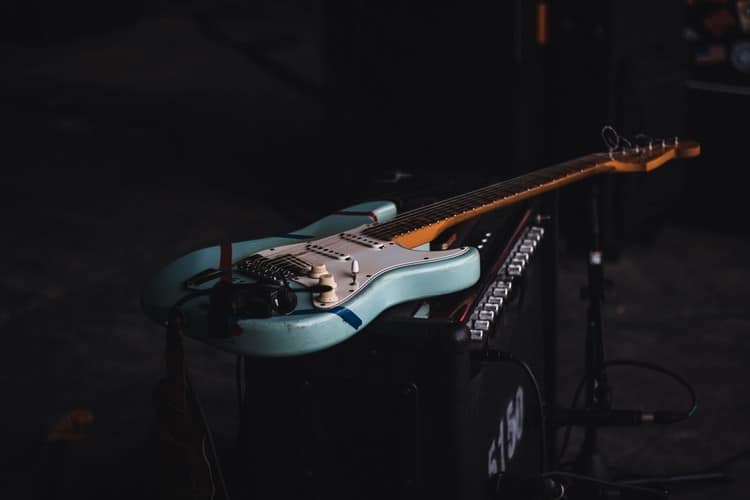
From the way a song is orchestrated with different instruments right down to the chords on the guitar, every song you’ve ever heard has had a formula that it follows in some fashion.
- Demystifying these formulas is important for us to understand how these songs move and function.
- When we begin to unravel a song to see what chords lie beneath, we may often find many patterns that can easily be followed.
- It’s important to take note of these patterns, as you will often encounter them more than once along your musical journey.
For example: The song “Pride & Joy” by Stevie Ray Vaughan follows a I – IV – V pattern throughout the entire tune. That means he uses the first, fourth and fifth chords of the minor scale to perform this tune. We call this a “Minor Blues” pattern.
- This chord pattern pops up frequently in other Blues songs. Get used to the sound of it!
- First, let’s dig into the basics of how to write a song!

How To Write A Song – The Basics & Workflow
The basics of songwriting are simple when they’re boiled down.
Write one to two chord progressions that are in the same key, and that compliment each other.
This isn’t a necessity, however – Many songs are built on just one or two chords alone.
If you want some dynamics within your song, we recommend two sections worth of chord progression to give your song some colour.
- The first thing you’ll need to know for this lesson are your basic major and minor chord shapes.
- Learning these chord types first helps us lay a proper foundation for learning how to write a song.
Check out your major chords below:
C MAJOR
(If you don't understand the above image please read our article "How To Read Guitar Chordboxes In 60 Seconds". It will make everything clear!)
E MAJOR
A MAJOR
D MAJOR
G MAJOR
F MAJOR
Pro Tip: We’ve only included the most necessary major and minor chord shapes in this lesson, as we won’t be using any shapes that are too complex.
- We’ll be doing our best to avoid barre chords for this lesson, but for a rundown on barre chords, click here.
- We cannot recommend enough that you take the time to learn your essential chords before diving into learning how to write a song.
Having a foundation for understanding the basic concepts of music early on makes your life a whole lot easier later, and we’re all about having as much knowledge at our disposal as possible.
The basic workflow of songwriting involves determining what key we want to play in, and thus what chords we have available to us.
Once we know the chords available in our preferred key, we can start to hash out each section of music individually.
Check out your basic minor chords here:
A MINOR
E MINOR
D MINOR
B MINOR
F MINOR
G MINOR
To accompany these chords, let’s turn our attention now to a bit of music theory.
Learn 12 EASY beginner chords with our popular guide

✅ Stop struggling. Start making music.
✅ Learn beginner-friendly versions of every chord.
This is our most popular guide and it will improve your chord ability quickly! 😎
Get your own personalised guitar-learning plan 🎸
Get a custom guitar-learning plan here: Click here for GuitarMetrics™
World-Class Guitar Courses 🌎
Learn from the world's best guitar educators: Click here for our guitar courses
How To Write A Song – An Introduction To Music Theory
Music theory might seem tedious to learn, but it’s quite useful in terms of helping us understand how notes and chords interact with one another.
We should begin with a study of the major scale, as it is the most common scale that we can use to learn how to write a song.
Below, you can find a chart of the major scale in the key of C, as well as the chord types for each degree of the major scale.
Take a minute to look at it, then we will explain everything that you see:
So, what do we see here?
- To start with, we have seven unique notes, each with their own number (or ‘scale degree’) attached to them.
- We may also notice that the 8th note is a repeat of the first note. It should be noted that this ‘8th’ note is just the first note in the next octave up.
The next thing to take note of is the ‘W’ & ‘H’ symbols.
These stand for ‘Whole Step’ and ‘Half Step’
1 Whole Step = 2 Frets
1 Half Step = 1 Fret
- These symbolize the distance from one note in the scale to the next.
- We can use whole steps and half steps to help us visualize any type of scale, provided we know what the notes are.
For every major scale, there is a relative minor scale that uses the same notes in a different order. For C major, the relative minor scale is A.
You can check out a map of the A minor scale below using the same chart from above:

Now that we’ve got a good outline for how our major and minor scales look, let’s talk about how chords work in the context of how to write a song!
Pro Tip: We’re not going to dive into diminished chords in this lesson, just know that they are far less often used and are almost always used to transition from one chord to another within the scale because of how unstable they are.
For a detailed rundown on diminished chords, click here.
How To Write A Song – Understanding Chords & How They Work Together
It’s one thing to understand the layout of the major or minor scale, but it’s another to understand how these chords work together.
In order to do that, we need to do some experimenting and begin creating a chord progression.
The best way to learn how to write a song is to, well, write a song. So let’s get started!
Let’s try stringing a few chords together.
C MAJOR
A MINOR
D MINOR
G MAJOR
Each one of these chords can be given however many beats you want.
- A typical chord progression will assign one bar to each of these chords, totalling four bars.
- We can loop this chord progression for as long as we like, or until we feel like it’s time for a change.
Pro Tip: Take note of the chord we started on – C major.
- A good rule of thumb where keys are concerned is that most often, the first chord of a song determines the key.
- This is not 100% the case, as many genres of music will switch keys. However, this principle can be applied to most Pop and Rock music.
The scale degrees used in the chord progression are I, VI, II and V. We can refer to this progression as a ‘1-6-2-5’ progression in C major.

For right now, we’ll call this our ‘main section’, as we are going to create a second section to go along with it.
Practice strumming this chord progression until you’re comfortable playing it. If you need help with strumming patterns, click here.
Now, let’s create another chord progression to go with this one!
How To Write A Song – Creating Multiple Sections
Do you know what’s better than one chord progression?
Two chord progressions!
- For this part of the lesson, we’re going to stay in the same key but create a second chord progression that will compliment the first one.
- Finding groups of chords that compliment each other is a key element of learning how to write a song.
- We’re going to check out a cool variation on the C major chord that incorporates the F note, instead of playing the F chord in its entirety.
Check this out:
CSUS4
G MAJOR
C MAJOR
A MINOR
In the Csus4 chord, there is an F at the 3rd fret on the D string. This F transitions nicely to the G in G major, giving us a rising feeling before we fall back to the C major chord.
We then fall once again to the A minor chord before completing the chord progression.
Pro Tip: This movement from the F note to the G is what we call voice leading.
- This means that a note within a chord guides us to the next chord smoothly.
- Voice leading is naturally pleasing to the ear and helps give us a sense that we’re on the right track when learning how to write a song!

When studying chords and how they interact, we should pay attention to chords that have notes which lead easily to other notes.
For example: The D minor chord contains the notes D, A & F. The G major chord contains the notes G, B & D.
- Not only does G major share the D note with D major, it also contains the notes B and G.
- These notes are both a whole step away from A and F respectfully.
- This makes G major a fantastic chord to transition from D minor.
- Look out for similarities like this in every chord you find, and you’ll have voice leading mastered in no time!

How To Write A Song – Organizing Your Musical Sections
For you lyric writers out there, this section is for you.
Many times, two sections may not be enough for us to convey the point we’re trying to make with our song.
- If you write lyrics, you might need a third section, or even a fourth.
- At this point, it’s a good idea to start organizing ourselves.
We’ve got two chord progressions – the first can serve as a verse, and the second as a chorus section.
We can alternate between these sections at will, but it’s a good idea to set them up for specific amounts of time when we’re learning how to write a song.
You may feel inclined to write a bridge section to help round out your chord progressions.
The bridge section can often be a play off of what has already been established within the song, so let’s try a new combination of the chords we already know:
A MINOR
CSUS4
G MAJOR
Try playing the A minor for twice as long this time in order to build more anticipation for the Csus4 and the G major.
The bridge section of a song usually serves to build back up to a chorus before the end of a song, so try and play back into your chorus section afterward!
At this point, we want to get these sections organized, so have a look below to see how we can play these three sections together easily.
Due to the fact that these are short progressions, we’re going to play each one twice:
Verse x2
Chorus x2
Verse x2
Chorus x2
Bridge x2
Chorus x2
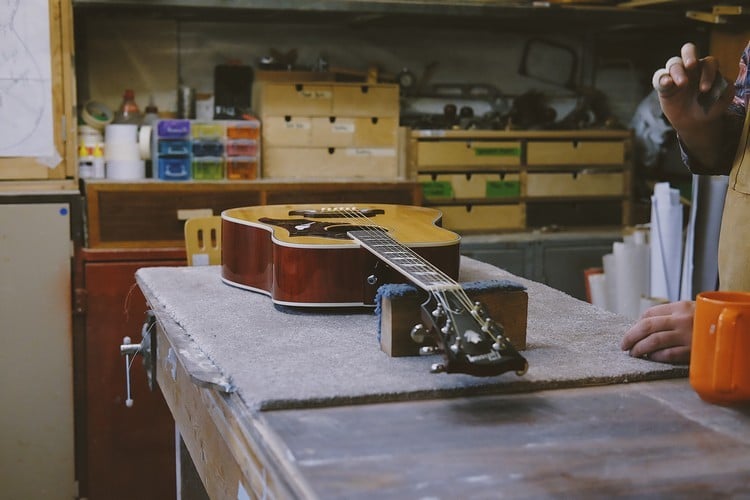
Download our lead guitar cheat-sheet to make things easier
It's hard to understand which scales work with which keys.
So we created a cheat-sheet! A key and scale-finder that you can use again and again.

Get your personalised guitar-learning plan 🎸
Get a custom guitar-learning plan here: Click here for GuitarMetrics™
World-Class Guitar Courses 🌎
Learn from the world's best guitar educators: Click here for our guitar courses
How To Write A Song – Creating Movement
Major and minor chords don’t have to be the be-all-end-all of our chord progression when learning how to write a song.
In fact, many chords are designed to create more movement, and help us voice lead even better between chords!
- Let’s take a moment to chat about suspended chords and how they can help us create more movement.
- So far, you’ve already played the Csus4 chord, so you have an idea of how it sounds.
Pro Tip: Major and minor chords are built off the scale degrees I, III and V. In a major chord, we leave the III as-is, but in a minor chord we flatten it (bIII), moving it down a half step.
This means that there is only a one-fret difference between a major chord and a minor chord!
We’re going to compare our major and minor chords with our suspended chords, so check out your basic chords first below:
C MAJOR
G MAJOR
D MINOR
A MINOR
Suspended chords are made by replacing the III with either the II (creating a sus2 chord) or the IV (creating a sus4 chord).
- Conveniently, the II and IV are on either side of your III, so it’s easy to move from a major or minor chord to a suspended chord.
- These types of chords create movement extremely well, because our ear expects to hear the sound of the III.
- When it doesn’t, it then expects to hear the movement to a more stable chord like a major or minor chord.
Some chords are more stable than others. Chords that are less stable require you to transition away from them to something more stable after using them (for example: a diminished chord)
Try This: We’ve outlined your sus2 and sus4 alternatives for you below in chord box format. Try adding in some variations of your choosing to spice up your song and see what sounds you like best!
Keep in mind that all of these chords work perfectly within the key of C major!
CSUS2
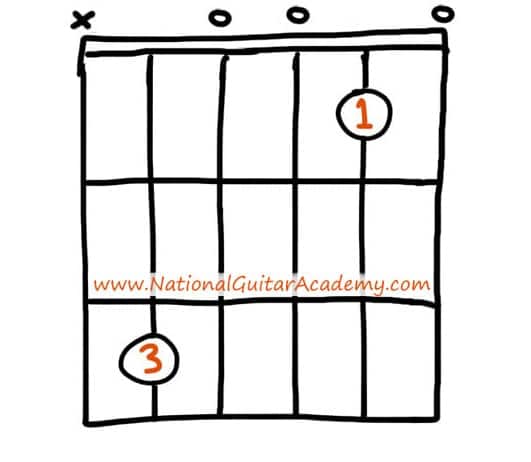
CSUS4
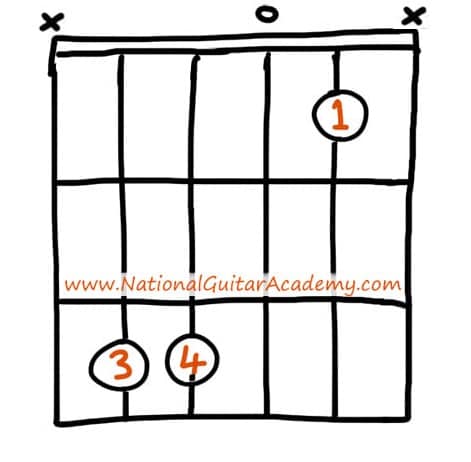
GSUS2
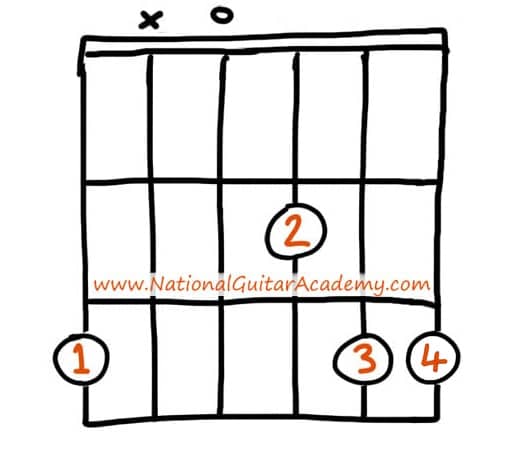
GSUS4
DSUS2
DSUS4
ASUS2
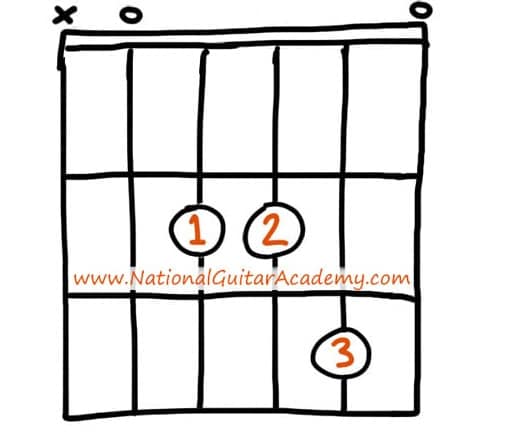
ASUS4
Suspended chords are stable enough on their own that we don’t need to feel obligated to create movement with them right away.
When we ‘resolve’ these chords to a major or minor chord, we are left with a feeling of satisfaction. Try them out for yourself!
How To Write A Song – Melodies
Melodies are one of the most important parts of the songwriting process.
Whether your plan on playing the melody yourself or handing it off to someone else, it’s important for the melody to be strong and impactful.
- One of the most important things we can do to learn how to write a song melody is to practice the main scale of the key that we’re in.
- For our example we’re using the key of C major, so we will play the C major scale or A minor scale over this progression.
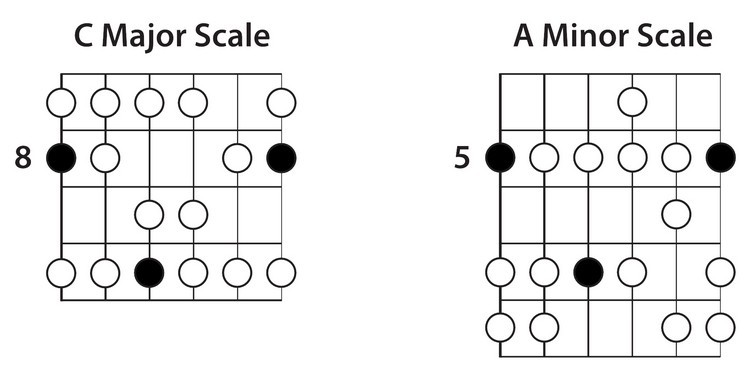
If we want to get really bold in our songwriting, we can learn the fretboard itself in C major.
This may seem like an overwhelming task, but when we look at the fretboard as a whole with only the notes in the scale we’re playing, it becomes easier to see patterns emerge.
Pro Tip: If you have a way to loop your chord progressions for this song, do that now and begin experimenting with something as simple as a one-string pattern up the fretboard, starting from C (red notes).
- This gives us a chance to hear more of the potential for movement over the progression we’ve created.
- If you have a smart phone, download a recording application and record yourself playing your chords, then play over the recording.
- If you can set the recording to loop, even better!
Check out the C major scale across 12 frets below:
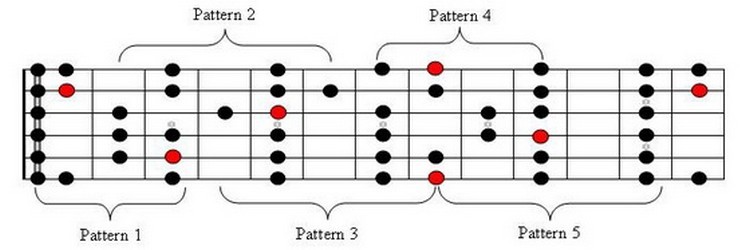
We’re not going to give you a specific riff to play in this section because we want you to experiment freely to find the sounds you like.
Don’t hesitate to block off a bit of time for this section to give your ears some inspiration!
Homework: Songwriters To Study
We can’t let you go without some additional material to study with.
Many songwriters have done a great job over the years of creating simple and effective music. This is most prominent in the Pop music world.
With that, we’ve got a homework assignment for you that involves a whole lot of listening.
- Listening is a huge component of learning music, and should never be understated.
- Get yourself a good set of headphones and listen to some of the tunes that we have laid out for you below.

When you listen, do yourself a favour and pull up the chords for each song. Pay attention and ask yourself the following questions:
- How do the chords move from one to the next?
- What key is this song in?
- How many chords does this song use?
- How are the sections of the song organized?
- What scale degrees are being used?
- How does the melody compliment the chords?
Analyzing music is a great way to learn about it. Whether you’re at home, on the train or at work, you can study music passively anywhere!
Every chance you get to listen is an opportunity to learn, so seize every one of them!

Here’s a short list of some of our favourite and most well-written songs:
Buffalo Springfield – For What It’s Worth (CHORDS)
Bruce Springsteen – I’m On Fire (CHORDS)
Lady Gaga – Paparazzi (CHORDS)
Tom Petty – Free Fallin’ (CHORDS)
Where Do I Go From Here?
If you want to expand on your new-found knowledge of how to write a song, we suggest the following:
- Pick up a copy of The First 100 Chords For Guitar
- Grab a copy of the Guitar Scales Handbook
- Check out this video of Mary Spender talking about songwriting
- Watch this other video of Mary Spender writing & recording a song in an hour
- Check out this video of Adam Neely breaking down his songwriting process with Ben Levin
Recommended Resources
If you enjoyed this free guide on how to write a song, you’ll love our other content below:
- How To Play Seven Nation Army On Guitar
- Types Of Guitar Pedals
- How To Play Guitar Songs
- CAGED System – How To Master Chords
- How To Read Guitar Chords
What Type of Guitarist Are You?
Take our 60-second quiz & get your results: Take The Quiz
Join the world's best online guitar school 🌎
- Get your own personalised guitar learning plan (customised just for YOU).
- World-class online guitar courses. Learn at your own pace.
- Community Campus & Learning Forum - A friendly community! Connect with our team & students. 😊
- Beginner Song library with chordsheets, tabs and tips. (Songs suitable for all levels!)
- Regular live streams, seminars and Q&A sessions - Learn from world-class guitar educators. Get all your questions answered!
Click here to learn more about National Guitar Academy membership 
Cool Guitar T-shirts 😎
Look cooler! Check out our merch: Click here to see our merch store
Want free guitar tips and video lessons delivered to your inbox?
Join over 100,000 guitar-learners and subscribe to our guitar-tips-by-email service. (It's free.)
We'll send you a series of lessons that will move you to the next level of your guitar journey.
Learn how everything fits together quickly, easily and effectively. We share ninja tips (for instant fun!) but also timeless fundamentals that will deepen your understanding.

Popular Lessons
How To Learn Guitar: An 11-Step Programme For Beginners
How To Choose The Perfect Beginner Guitar
More Cool Guitar Stuff
Learn about National Guitar Academy: About Us
Join us on Facebook for daily guitar tips.
Listen to our Learn Guitar Podcast for rapid guitar progress.
Check out our free chord lessons.
Get our best guitar tips & videos
Where should we send it?
Where should we send it?
Get our best guitar tips & videos

